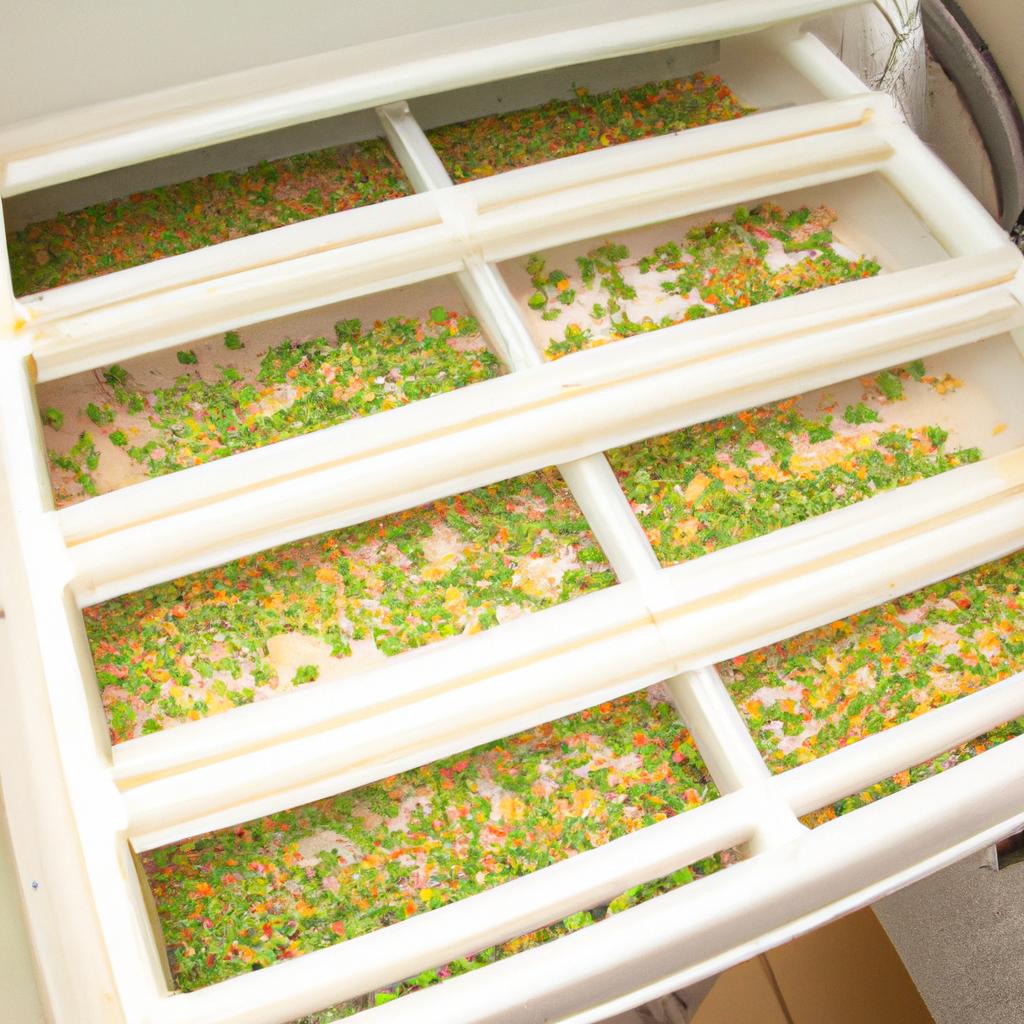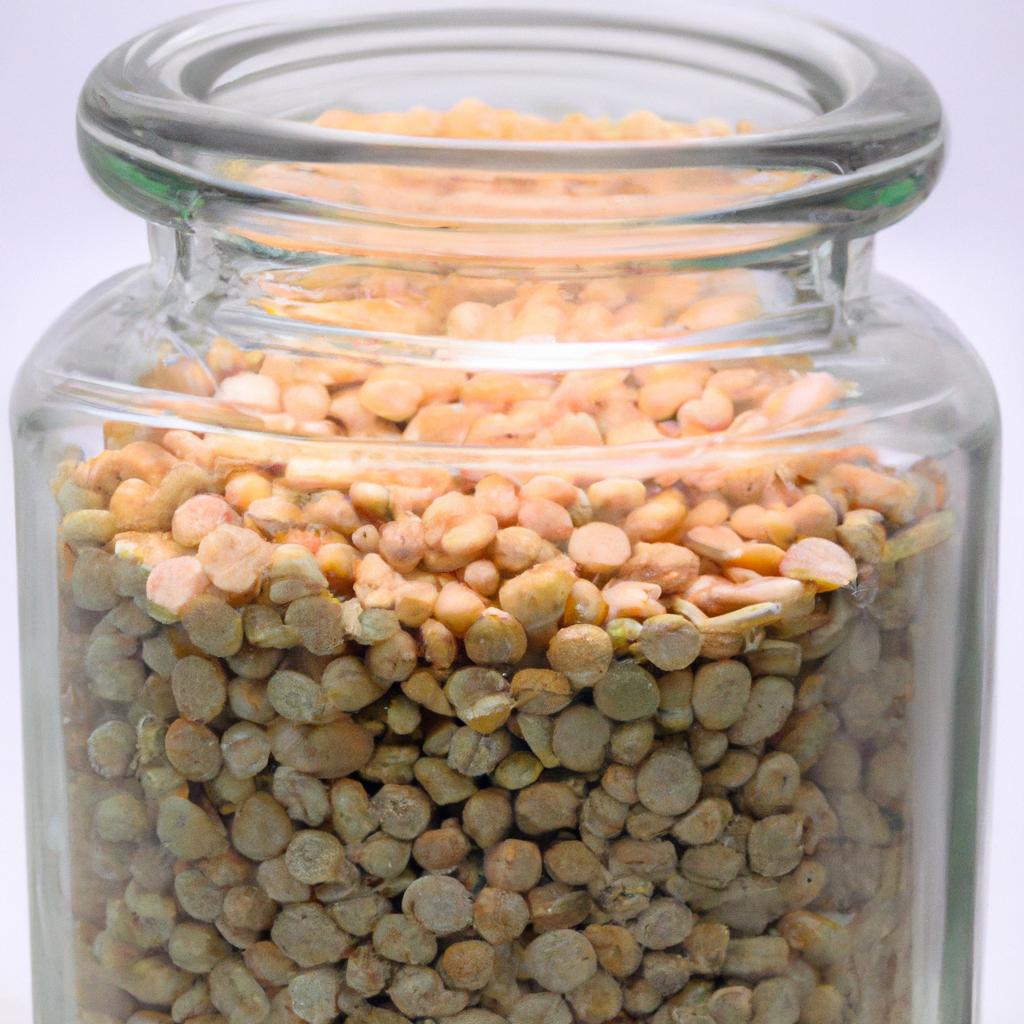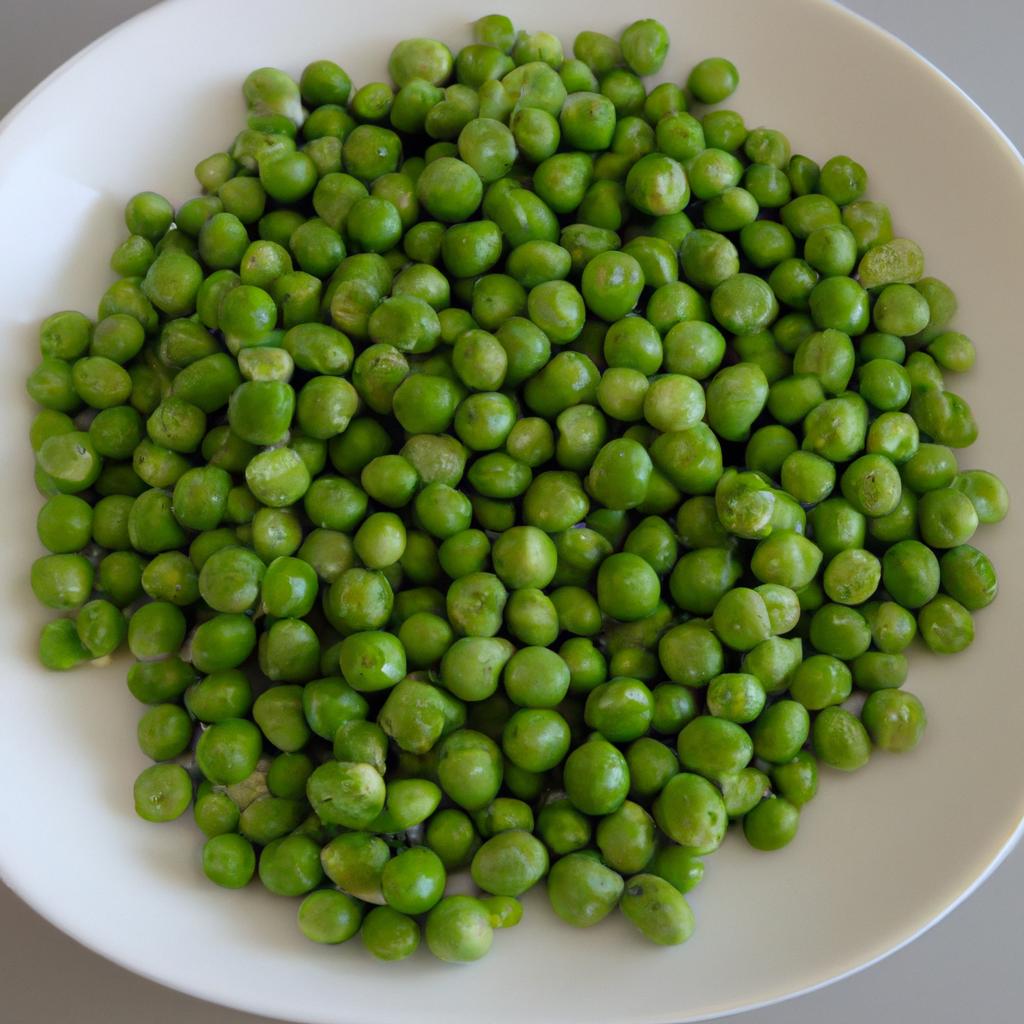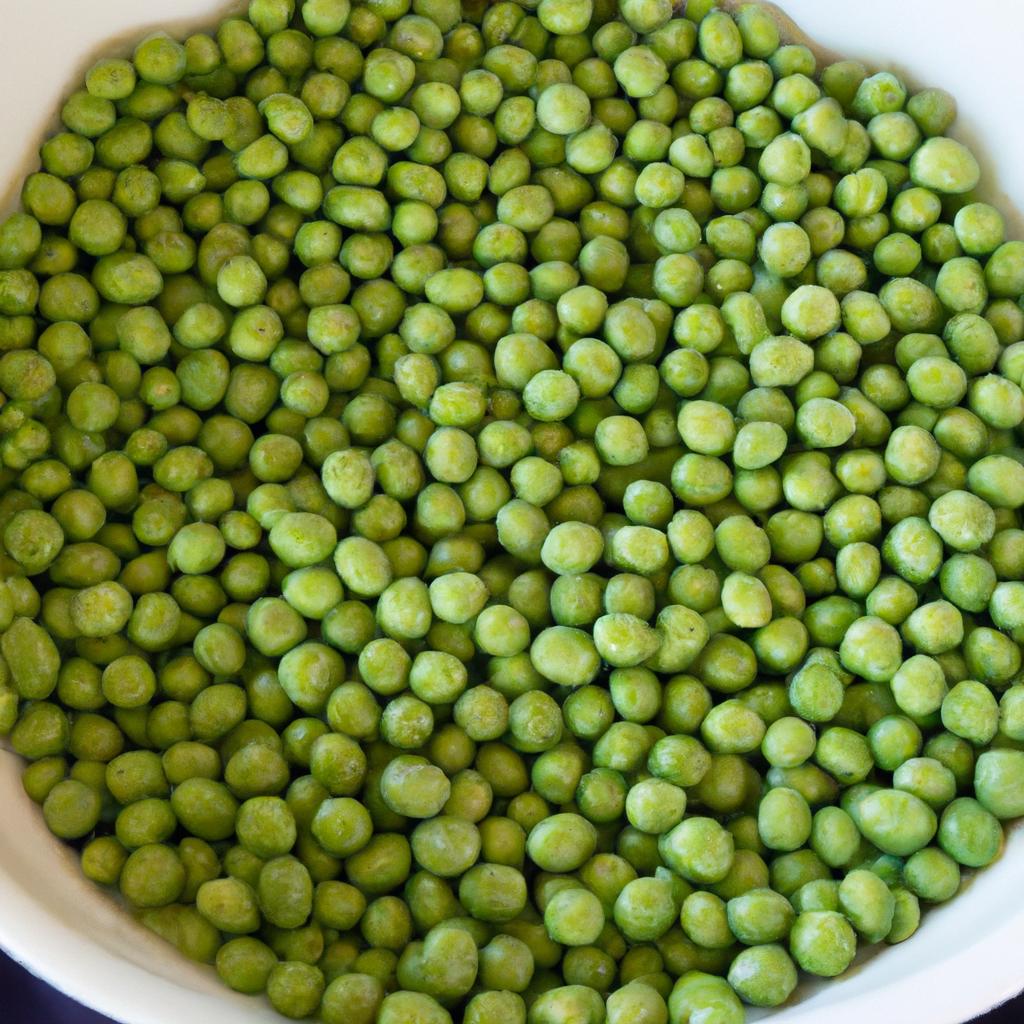Peas are a beloved vegetable that can be enjoyed in many different ways. However, did you know that dehydrating peas is an excellent way to preserve them for future use? Dehydrating peas not only extends their shelf life but also enhances their flavor profile and nutritional value. In this comprehensive guide, I will walk you through the steps involved in dehydrating peas, from preparation to storage.
Why Dehydrating Peas is Beneficial

Dehydrating peas is a cost-effective way to enjoy this nutritious vegetable year-round. It removes the moisture content, which helps to prevent spoilage, bacterial growth, and insect infestations. Once dehydrated, peas take up significantly less space, making them easy to store and transport. They are perfect for outdoor adventures, camping trips, and emergency food supplies. Additionally, dehydrated peas retain most of their nutritional value, including protein, fiber, vitamins, and minerals, making them a healthy addition to any meal.
Overview of the Steps Involved in the Process

To dehydrate peas, you need to follow a few simple steps. First, select the right peas – fresh and young peas are best for dehydrating. Clean and remove any debris, then blanch the peas to preserve their color and flavor. Next, choose the right dehydration method, such as using a dehydrator or an oven. Finally, store the dehydrated peas properly to extend their shelf life. Rehydrating the peas is easy and can be done by soaking them in water or adding them directly to a recipe.
Next, we will delve into each step in more detail, providing you with helpful tips and tricks to make the process of dehydrating peas a breeze.
Preparing the Peas for Dehydration

Before dehydrating peas, it is crucial to prepare them properly to ensure they retain their flavor and nutritional value. Here’s what you need to do:
Selecting the Right Peas
The first step in preparing peas for dehydration is selecting the right peas. The best peas for dehydrating are fresh, young, and tender. Choose peas that are bright green and plump, with no signs of browning or damage. If you are using frozen peas, make sure they are not freezer-burnt or past their expiration date.
Cleaning and Removing Any Debris
Once you have selected your peas, it’s time to clean them. Rinse the peas thoroughly in cold water, removing any dirt or debris. You can use a colander or mesh strainer to make this process easier. After rinsing, pat the peas dry with a clean towel or paper towel.
Blanching the Peas
Blanching is an essential step in preparing peas for dehydration. Blanching is the process of briefly boiling the peas before cooling them in ice water. Blanching helps to preserve the color, texture, and flavor of the peas. To blanch peas, follow these steps:
- Bring a large pot of water to a boil.
- Add the peas to the pot and boil them for 1-2 minutes.
- Drain the peas and immediately plunge them into a bowl of ice water to stop the cooking process.
- Once the peas have cooled, drain them again and pat them dry with a clean towel or paper towel.
By following these simple steps, you can prepare your peas for dehydration and ensure that they retain their flavor, color, and nutritional value.
Dehydrating the Peas
Dehydrating peas is a simple process that can be done using various methods. Here, we will explore the different dehydration methods available and provide you with step-by-step instructions for using a dehydrator.
Choosing the Right Dehydration Method
The three most common methods for dehydrating peas are using a dehydrator, an oven, or the sun. The choice of dehydration method depends on factors such as the time available, the quantity of peas, and the preferred end result.
A dehydrator is the most efficient method of dehydrating peas, as it is faster and provides consistent results. An oven can also be used, but it requires more time and attention to prevent the peas from burning. Dehydrating peas in the sun is a traditional method that takes several days, but it requires a warm and dry climate.
Step-by-Step Instructions for Using a Dehydrator
Dehydrating peas using a dehydrator is a straightforward process. Here are the steps involved:
- Preheat the dehydrator to 125°F (52°C).
- Spread the blanched peas in a single layer on the dehydrator trays, making sure they do not touch.
- Place the trays in the dehydrator and set the timer for 6-8 hours.
- Check the peas periodically to ensure they are drying evenly and rotate the trays if necessary.
- Once the peas are dry, remove them from the dehydrator and let them cool.
- Store the dehydrated peas in an airtight container in a cool, dark, and dry place.
Alternative Methods for Dehydrating Peas
If you don’t have a dehydrator, you can still dehydrate peas using alternative methods. Here are two methods you can try:
- Oven method: Preheat the oven to 140°F (60°C) and spread the blanched peas in a single layer on a baking sheet lined with parchment paper. Bake for 6-8 hours or until the peas are dry.
- Sun method: Spread the blanched peas on a clean and dry surface, such as a mesh screen or a baking sheet. Place the screen or baking sheet in a sunny and warm area and cover it with a cheesecloth to protect the peas from insects. Turn the peas occasionally and bring them inside at night. Dehydrating peas using the sun method may take up to several days.
Dehydrating peas is a simple and effective way to preserve this nutritious vegetable. With these tips and tricks, you can choose the right dehydration method that suits your needs and enjoy dehydrated peas all year round.
Storing Dehydrated Peas
Once you have successfully dehydrated your peas, it is essential to store them properly to extend their shelf life. Here are some tips to help you store your dehydrated peas:
Proper Storage Techniques
- Store the dehydrated peas in an airtight container such as a glass jar, plastic container, or a zipper bag.
- Make sure the container is clean and dry before adding the peas.
- Label the container with the date of dehydration and the type of peas.
- Keep the container in a cool, dark, and dry place, away from sunlight and humidity.
- Avoid storing the peas near strong-smelling foods as they may absorb the odor.
Tips for Extending the Shelf Life
- Dehydrated peas can last up to a year if stored properly.
- Check the peas regularly for any signs of moisture or spoilage.
- If you notice any moisture or spoilage, discard the affected peas immediately.
- It is best to use the dehydrated peas within six months to ensure their optimal flavor and texture.
Ways to Use Dehydrated Peas in Recipes
Dehydrated peas are a versatile ingredient that can be used in many recipes. Here are some ideas on how to use them:
- Add dehydrated peas to soups, stews, and chili for extra flavor and nutrition.
- Rehydrate the peas and use them in salads, pasta dishes, and casseroles.
- Grind the dehydrated peas into a powder to use as a seasoning or thickener in sauces and dips.
- Use dehydrated peas in baking recipes such as bread, muffins, and cakes.
By storing your dehydrated peas correctly, you can ensure that they remain fresh for longer and can be used in many different recipes. Experiment with different ways of using dehydrated peas to add flavor, nutrition, and versatility to your meals.
Rehydrating Dehydrated Peas
Once you have successfully dehydrated peas, you can rehydrate them to use them in your favorite recipes. Here are some methods for rehydrating peas:
Soaking in Water
One of the easiest ways to rehydrate peas is by soaking them in water. In a bowl, add a cup of peas and cover them with two cups of water. Allow the peas to soak for 3-4 hours, or overnight for best results. Drain the peas and rinse them with cold water before using them in your recipe.
Boiling
Boiling is another quick method to rehydrate peas. In a pot, add a cup of peas and cover them with 2-3 cups of water. Bring the water to a boil, then turn off the heat and let the peas soak for 1-2 hours. Drain the peas and rinse them with cold water before using them in your recipe.
Adding to Recipe
You can also add dehydrated peas directly to your recipe without rehydrating them first. This method is perfect for soups, stews, and casseroles. The peas will absorb moisture from the recipe, so be sure to add a bit more liquid to compensate.
How to Use Rehydrated Peas in Recipes
Rehydrated peas are versatile and can be used in a variety of dishes. Here are some ideas to get you started:
Soups and Stews
Add rehydrated peas to your favorite soup or stew recipe for a burst of flavor and nutrition. They pair well with other vegetables, meats, and grains.
Salads
Rehydrated peas add texture and color to salads. You can use them in potato salads, pasta salads, and green salads.
Snacks
Rehydrated peas make a healthy and crunchy snack. Roast them with your favorite spices for a flavorful treat.
Side Dishes
Rehydrated peas can be used as a side dish with roasted or grilled meats. Simply season them with salt, pepper, and butter for a tasty and nutritious side dish.
Rehydrated peas are a great addition to any recipe. They are easy to prepare and can be used in a variety of dishes. Experiment with different methods and recipes to find your favorite way to use them.
Conclusion
Dehydrating peas is a simple and cost-effective way to enjoy this nutritious vegetable year-round. It not only extends their shelf life but also enhances their flavor profile and nutritional value. By following the steps outlined in this comprehensive guide, you can easily dehydrate peas at home and enjoy their benefits in a variety of recipes.
Remember to select fresh and young peas, clean and blanch them before dehydrating, and store them properly to extend their shelf life. Rehydrating the peas is easy and can be done by soaking them in water or adding them directly to a recipe.
If you’re looking for creative ways to use dehydrated peas, try adding them to soups, stews, salads, or as a snack on their own. They are perfect for outdoor adventures, camping trips, and emergency food supplies.
For more information on the benefits of peas and other vegetables, be sure to check out peasbenefits.com. Thank you for reading, and happy dehydrating!


